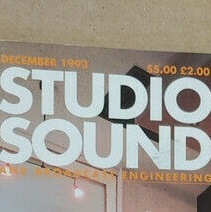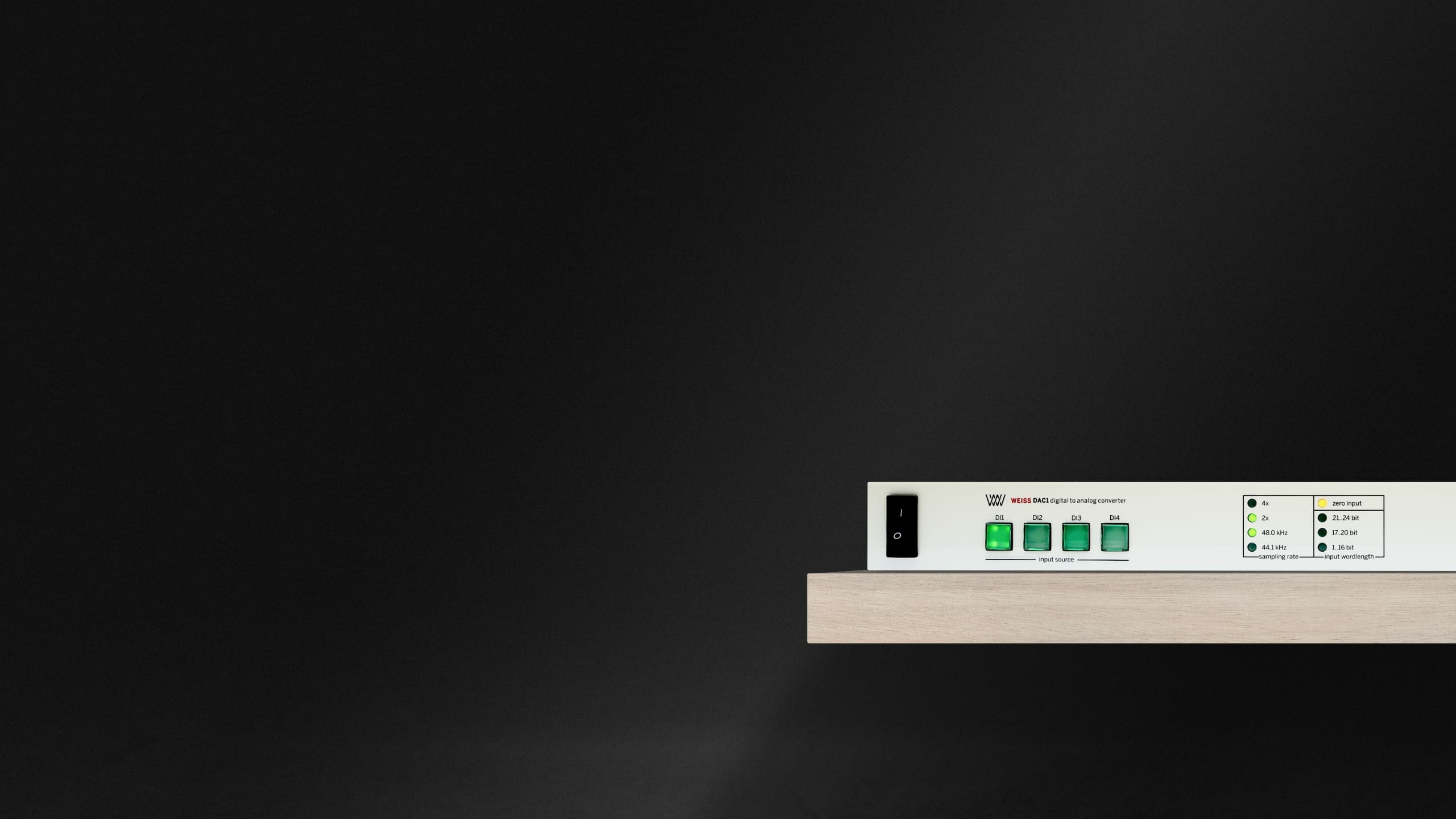HEAR EVERYTHING
UNCOMPROMISING digital-to-analog converter
For serious audio work, your monitoring chain must provide the most accurate representation possible of your audio material. As Weiss Engineering’s most advanced and precise digital-to-analog converter, the DAC1 is the ultimate in transparency and resolution.
With its four digital stereo inputs and several industry-first solutions in its circuit design, this unit is trusted by some of the world’s most respected audio engineers.
Main Features
Weiss DAC1


Technical Data
Weiss DAC1
- Three AES/EBU stereo digital inputs on XLR connectors.
- One TOSLINK (optical) stereo digital input.
- The accepted sampling frequencies are 44.1, 48, 88.2, 96, 176.4, and 192 kHz.
- AES/EBU signals in single wire or dual wire formats can be used.
- Upon request, any version of the DAC1 can be configured with Thunderbolt, USB, Firewire, or ST type glass fiber digital inputs.
- The USB input interface also adds DSD to PCM conversion capability.
Each AES/EBU input is actively routed to a corresponding XLR digital output, allowing for monitoring at multiple stages in a digital studio setup.
- Two analog outputs (L/R) on XLR connectors.
- Output levels can be set between −infinity and +27 dBu.
- The outputs are symmetrical but do not have any sound degrading servo mechanisms built in. For asymmetrical operation, only one leg of the XLR connector (plus ground) is used.
The front panel has four switches for selecting which of the four digital inputs is currently active.
The front panel also has LEDs for displaying sampling frequency, input word length, and signal presence.
The DAC1 MK3 has a single output level trim knob on the back that controls both output channels (L/R) simultaneously in 1 dB increments.
The DAC1 MK2 has an output level range switch (hi/lo) and two 25-turn trim potentiometers on the front for fine trimming the L/R output levels.
Both versions can be remote controlled with a wired controller connected to the unit’s 15-pin DSUB connectors. This allows for remote control of the output level and input switching.
In addition, the units can be configured to accept IR remote control for wireless adjustment of the output level.
DAC1 MK3
Frequency response: ±0.25 dB 20 Hz-20 kHz (44.1 and 48 kHz sampling frequencies), ±0.75 dB 20 kHz-40 kHz (88.2, 96, 176.4 and 192 kHz sampling frequencies).
THD+N at 1 kHz: -112 dB at -3 dBFS input level, -115 dB at 0 dBFS input level.
SNR at -40 dBFS input: 129 dB unweighted, relative to full scale output. 132 dB A-weighted, relative to full scale output.
Crosstalk: Less than -110 dB, 0 Hz –20 kHz.
CMRR: Higher than 90dB at 1 kHz, higher than 80dB at 20 kHz, higher than 60dB at 20 Hz.
Depth: 30 cm / 11.8 inches
Width: 43.3 cm / 17 inches (19 inches with rack ears)
Height: 4.4 cm / 1.7 inches (1 RU)
Note: For more detailed product specifications, please refer to the user manual.
Press Reviews
What the media say

6Moons.com
Pro Audio Blog
DAC1
Can a pro audio DAC beat a hi-end consumer DAC? Yes! I refer you to the Weiss DAC1-MK2.

Studio Sound Magazine
Pro Audio Magazine
DAC1
There’s no question that the performance of both digital and analogue elements in the DAC1’s signal path warrants its description as a reference converter.
Weiss Artists
What the users say
Product Downloads
For your DAC1
DAC1 High Resolution Photos
- N/A
- zip
- 24.7 MB
DAC1 Manual
- 1
- 0.1 MB
DAC1-MK2 Manual
- 1
- 0.1 MB
DAC1-MK3 Manual
- 1
- 0.5 MB
Firewire Driver Release notes MacOS
- All
- MacOS
Firewire Driver Release notes Windows
- All
- Windows
Weiss Gambit Series Latency Documentation
- N/A
- 0 MB





